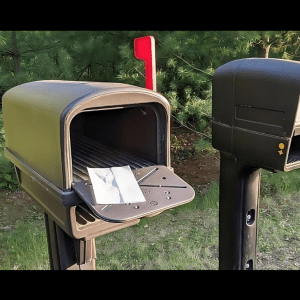If you’ve ever boarded a plane, you’ve probably noticed the warm greetings from flight attendants, welcoming each passenger with a friendly “hello.” While this gesture might seem like simple courtesy, there’s much more to this interaction than meets the eye. For flight attendants, this greeting serves a critical purpose beyond politeness; it’s part of their responsibility to maintain a safe, comfortable environment on board.
The Real Reason Behind the Flight Attendant’s Greeting

Responding to a flight attendant’s greeting is more than just a polite exchange—it’s a moment where flight attendants assess every passenger who steps on board. This quick interaction allows them to pick up on subtle cues about each passenger’s state of mind and physical condition, particularly looking for signs of alcohol consumption or illness. It’s a small but effective method of gauging potential safety issues before they become problems.
Why is this so important? Because once the plane is in the air, there’s no easy way to manage disruptive situations, making it essential for flight attendants to identify potential concerns at the outset.
Spotting Signs of Alcohol Intoxication
It’s common for travelers to have a drink or two at the airport, whether to ease pre-flight nerves or enjoy some downtime. However, in some cases, passengers might have a bit more than intended, making them overly intoxicated by the time they board. This can lead to several safety risks—intoxicated passengers may become disruptive, struggle with simple tasks like fastening seat belts, or even require assistance from other passengers.
During the initial greeting, flight attendants look for telltale signs of intoxication, such as slurred speech, unsteady movements, or the distinct smell of alcohol. If they suspect a passenger might be too drunk to fly, they can take action, which may include informing the pilot or even asking the passenger not to board. Ensuring every passenger is sober enough to follow instructions is a proactive measure to maintain onboard safety.
Evaluating Passenger Readiness for Flight
Beyond spotting alcohol-related issues, the greeting also allows flight attendants to gauge passengers for other conditions that might make them unfit to fly. For instance, a passenger who appears unwell could pose a risk if their condition worsens during the flight. By quickly engaging with each passenger, flight attendants can spot signs of sickness, fatigue, or anxiety, which might require special attention.
According to Iona Iachim, a flight attendant with Wizz Air, these initial interactions are essential for maintaining safety in the confined space of an aircraft. The friendly “hello” is a brief but effective way to identify any passengers who may need extra support.
Identifying Potential Helpers in Case of an Emergency
The greeting isn’t just about identifying potential risks; it’s also about finding potential helpers. By making brief eye contact and observing passenger responses, flight attendants can get a feel for who might be calm, composed, and capable in an emergency. Experienced attendants often remember these individuals and mentally note their seat numbers, giving them a sense of where potential “helpers” are located throughout the cabin.
This “mental map” of reliable passengers can be invaluable in emergencies, such as unexpected turbulence or an evacuation scenario. Knowing who might be willing and able to lend a hand gives flight attendants a strategic advantage in quickly managing a crisis.
It’s Not About Flirting or Attraction

Some passengers might misinterpret a flight attendant’s friendliness as personal interest or attraction, but this is rarely the case. While flight attendants maintain a warm, approachable demeanor, their primary goal is to ensure that every passenger feels welcomed and at ease. The initial greeting is about professionalism and safety, not about sparking romance at 30,000 feet.
There is, however, a bit of humor among flight attendants about particularly pleasant passengers. Some crews use the term “BOB,” or “best on board,” to jokingly refer to passengers they find especially friendly or enjoyable. While this is all in good fun, it has nothing to do with romantic interest and everything to do with recognizing passengers who make the flight experience better.
Understanding In-Flight Etiquette and Professionalism
For some passengers, the friendly interaction at boarding can be confusing, especially if they’re unfamiliar with the professional boundaries that flight attendants must maintain. This professionalism is crucial in the confined and shared space of an airplane, where every interaction can affect the overall atmosphere.

If you’re genuinely interested in connecting with a flight attendant, the best approach is to respect their role and professionalism. An appropriate way to follow up would be to discreetly share contact information when you disembark rather than engaging in potentially awkward conversation in-flight. This keeps the atmosphere respectful and ensures everyone’s comfort.
How the Initial Greeting Contributes to In-Flight Safety
To passengers, the simple greeting might seem trivial, but it’s an essential part of the flight crew’s safety protocol. This interaction is a tool that flight attendants use to:
- Identify Potential Safety Concerns: Whether a passenger is intoxicated, visibly unwell, or behaving erratically, these factors can affect everyone on board. Flight attendants can make informed decisions based on these observations.
- Establish a Friendly Atmosphere: Welcoming passengers warmly helps set a positive tone for the flight, reducing potential friction between passengers and crew.
- Create a Mental Map of the Cabin: By interacting briefly with everyone, flight attendants get a better sense of who they might be able to rely on in case of an emergency.
Next time you board a plane and receive that friendly greeting, remember that it’s more than just a polite hello—it’s part of a well-orchestrated system designed to keep everyone safe and comfortable.
Conclusion: The Greeting That Goes Beyond Courtesy
The simple act of saying “hello” to passengers as they board is far more than a gesture of politeness for flight attendants. This moment serves as a subtle yet powerful tool for assessing passengers, identifying potential risks, and setting the tone for a smooth and safe flight. So, the next time you find yourself boarding a plane, remember that your friendly response to the flight attendant isn’t just good manners; it’s an essential part of ensuring a safe journey for everyone on board.


